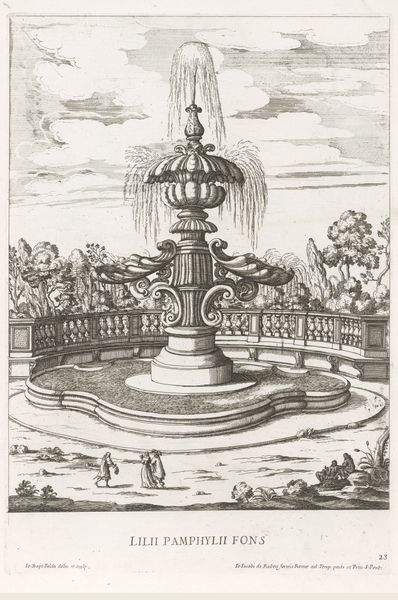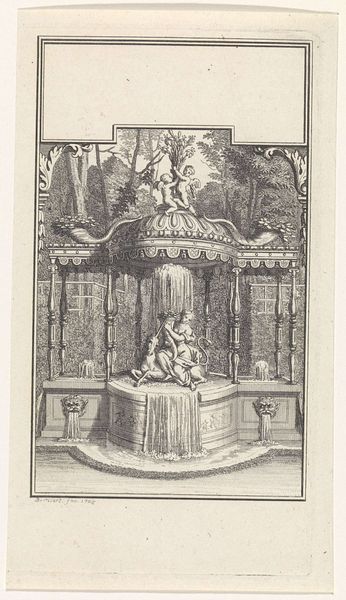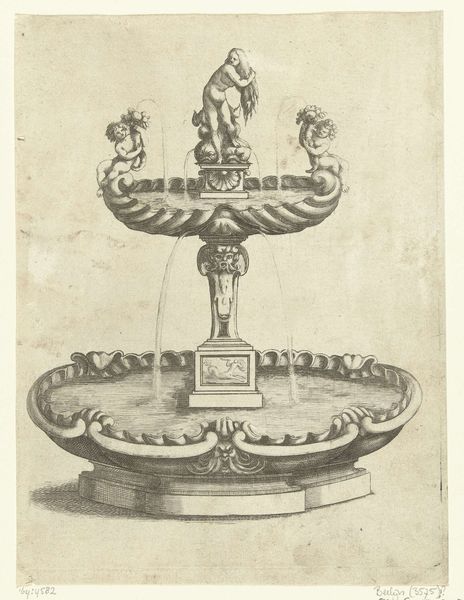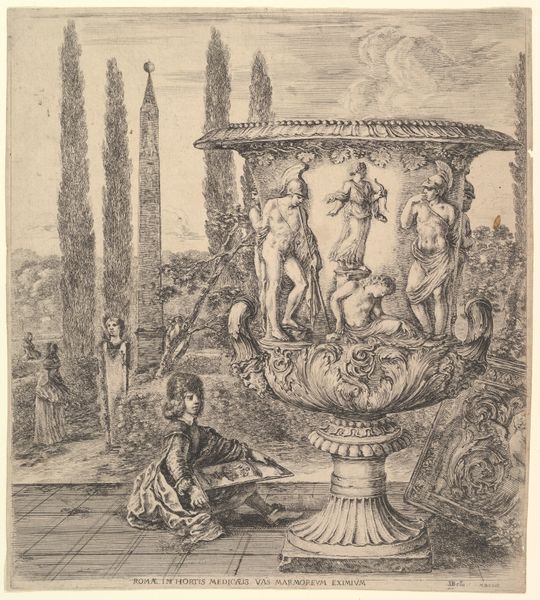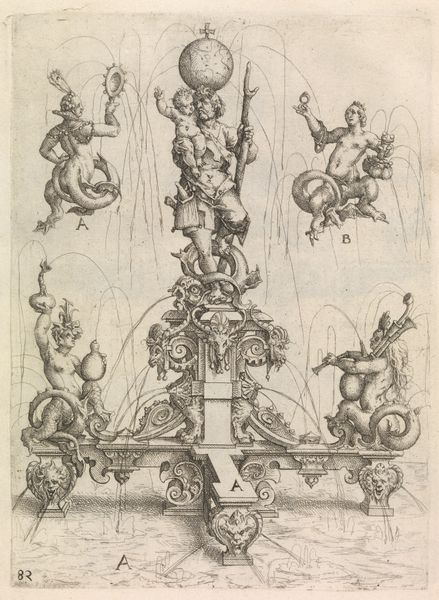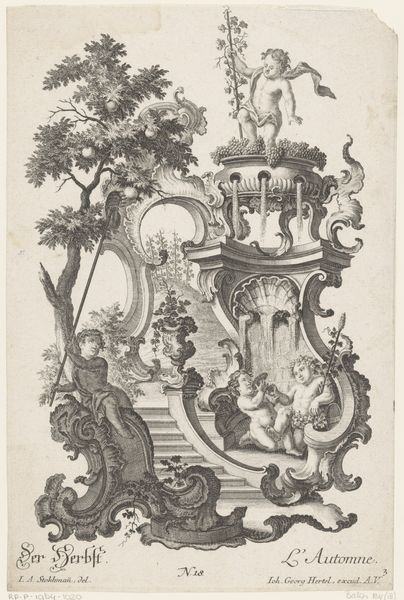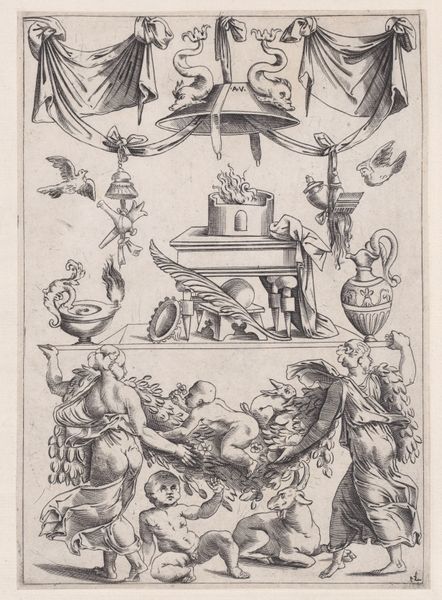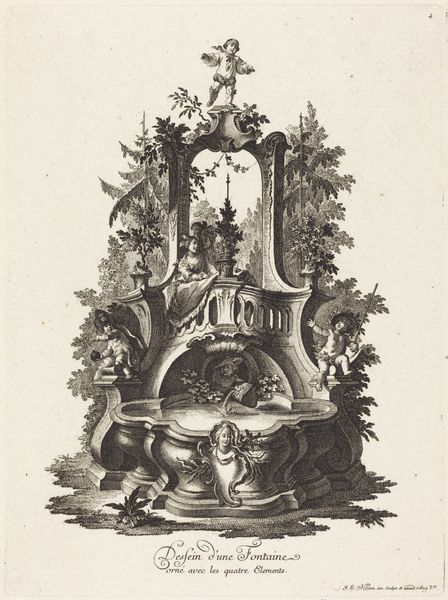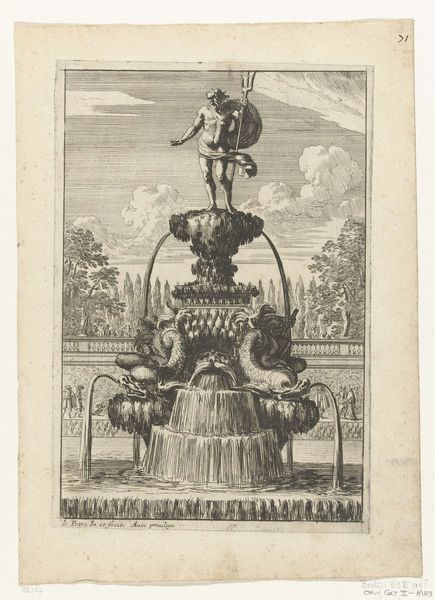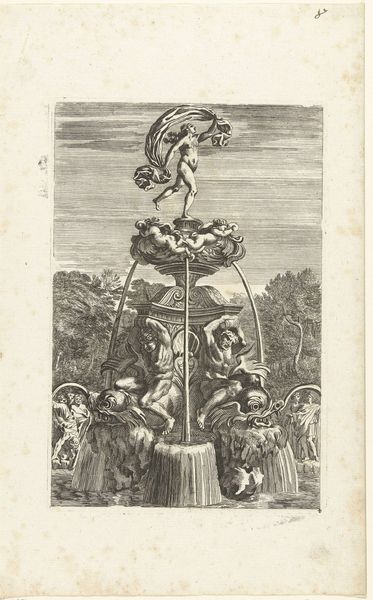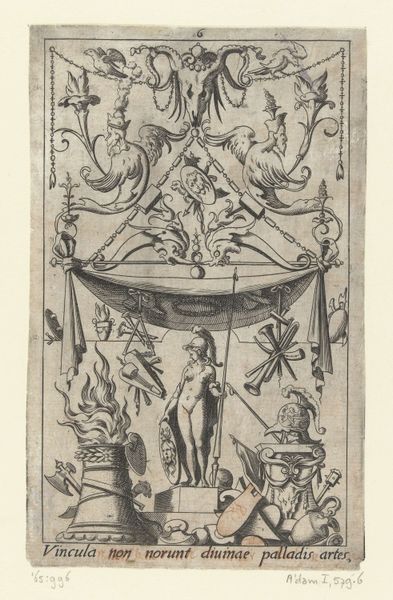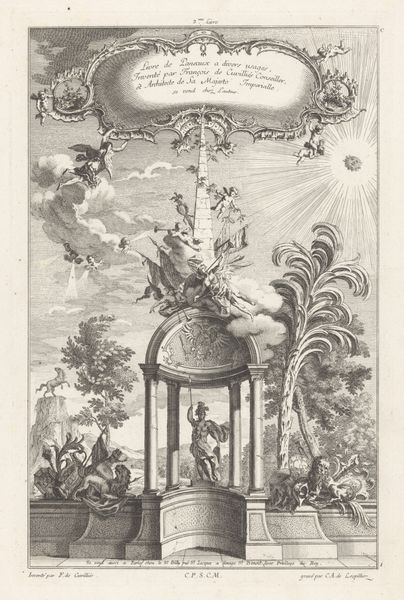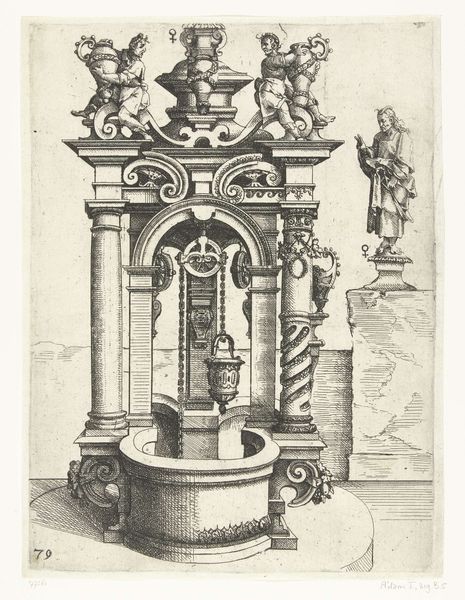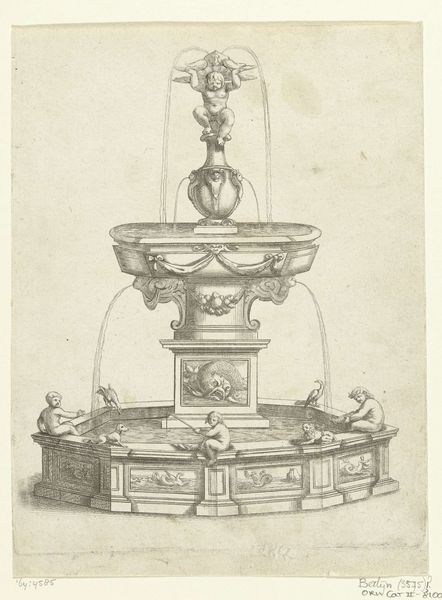
Fontein met dolfijnen in de tuinen van Villa Doria Pamphilj te Rome 1653 - 1691
0:00
0:00
print, engraving
#
baroque
# print
#
pen sketch
#
landscape
#
cityscape
#
engraving
Dimensions: height 349 mm, width 223 mm
Copyright: Rijks Museum: Open Domain
Giovanni Battista Falda created this print of the fountain in the gardens of the Villa Doria Pamphilj in Rome sometime in the late 17th century. Its primary subject, of course, is the fountain, but the print also gives us some insight into the relationship between art, power, and public space in Baroque-era Rome. The Villa Doria Pamphilj was, and remains, one of the largest and most opulent estates in the city. Built by the wealthy Pamphilj family, it was a symbol of their status and influence. Falda's print, with its detailed rendering of the fountain and the surrounding gardens, presents a carefully constructed image of wealth and power, and the very act of commissioning and disseminating prints like these was a means of reinforcing the family's social position. Notice how small the figures around the fountain are in comparison to the architecture. The Villa Doria Pamphilj tells us how art and architecture were used to shape social hierarchies. By studying historical records, architectural plans, and other visual sources, we can gain a deeper understanding of the social and political context in which art was produced and consumed.
Comments
No comments
Be the first to comment and join the conversation on the ultimate creative platform.
